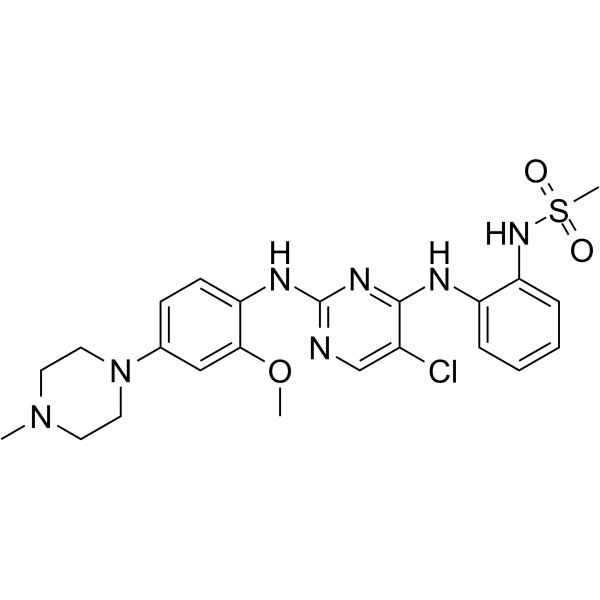Apoptosis
Produkte für Apoptosis
- Bestell-Nr. Artikelname Informationen
-
GC64946
SRT 2183
SRT 2183 ist ein selektiver Sirtuin-1 (SIRT1)-Aktivator mit einem EC1,5-Wert von 0,36 μM. SRT 2183 induziert Wachstumsstillstand und Apoptose, einhergehend mit einer Deacetylierung von STAT3 und NF-κB und einer Verringerung der c-Myc-Proteinspiegel.

-
GC52293
STAT3 Inhibitor 4m
A STAT3 inhibitor

-
GC65344
STAT5-IN-2
STAT5-IN-2 ist ein STAT5-Inhibitor, extrahiert aus Referenz 1, Beispiel 17f. STAT5-IN-2 hat eine starke antileukÄmische Wirkung.
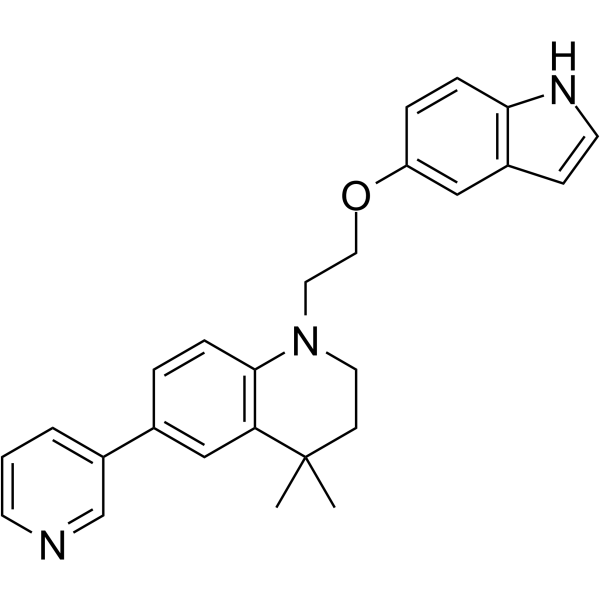
-
GC65249
STL127705
STL127705 (Verbindung L) ist ein potenter Ku 70/80-Heterodimer-Proteininhibitor mit einem IC50 von 3,5 μM. STL127705 stÖrt die Bindung von Ku70/80 an DNA und hemmt dadurch die Aktivierung der DNA-PKCS-Kinase. STL127705 zeigt antiproliferative und Antikrebs-AktivitÄt. STL127705 induziert Apoptose.
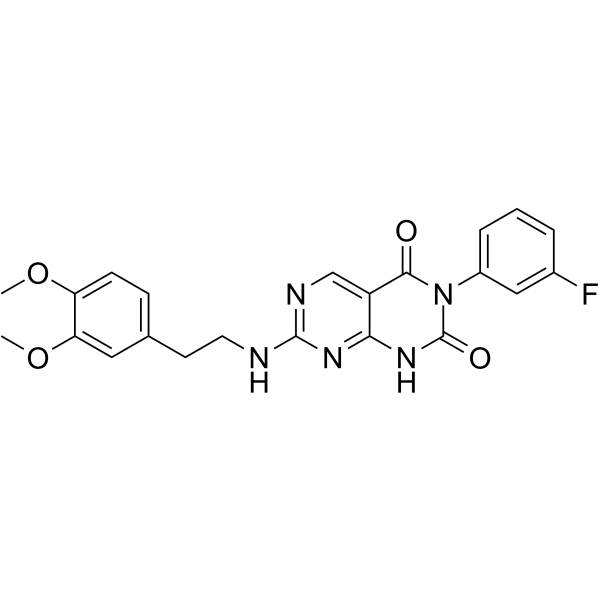
-
GC65395
T025
T025 ist ein oral aktiver und hochpotenter Inhibitor der Cdc2-ähnlichen Kinase (CLKs) mit Kd-Werten von 4,8; 0,096; 6,5; 0,61; 0,074; 1,5 und 32 nM für CLK1, CLK2, CLK3, CLK4 , DYRK1A , DYRK1B und DYRK2.

-
GC65433
Tafasitamab
Tafasitamab (XmAb5574) ist ein Fc-modifizierter, humanisierter monoklonaler AntikÖrper, der an das menschliche B-Zell-OberflÄchenantigen CD19 bindet.

-
GC64936
TD52 dihydrochloride
TD52-Dihydrochlorid, ein Erlotinib-Derivat, ist ein oral aktiver, potenter Krebshemmer des Proteinphosphatase-2A-(CIP2A-)Hemmers. TD52-Dihydrochlorid vermittelt die apoptotische Wirkung in dreifach negativen Brustkrebszellen (TNBC) Über die Regulierung des CIP2A/PP2A/p-Akt-Signalwegs. TD52-Dihydrochlorid reduzierte indirekt CIP2A, indem es die Elk1-Bindung an den CIP2A-Promotor stÖrte. TD52-Dihydrochlorid hat eine geringere p-EGFR-Hemmung und eine starke Anti-Krebs-AktivitÄt.
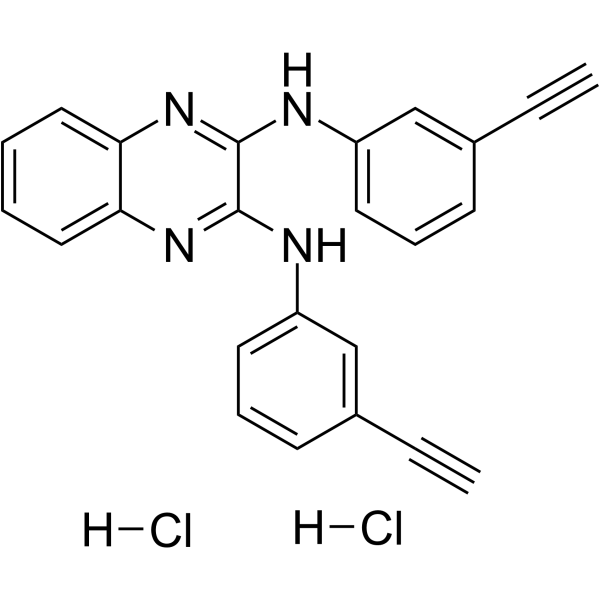
-
GC64373
Tezacitabine
Tezacitabin ist ein zytostatischer und zytotoxischer Antimetabolit und ein Nukleosid-Analogon. Tezacitabin hemmt irreversibel die Ribonukleotid-Reduktase und greift in die DNA-Replikation und -Reparatur ein. Tezacitabin induziert effektiv Zellen apoptotisch. Tezacitabin hat das Potenzial zur Behandlung von LeukÄmien und soliden Tumoren (Karzinomen).
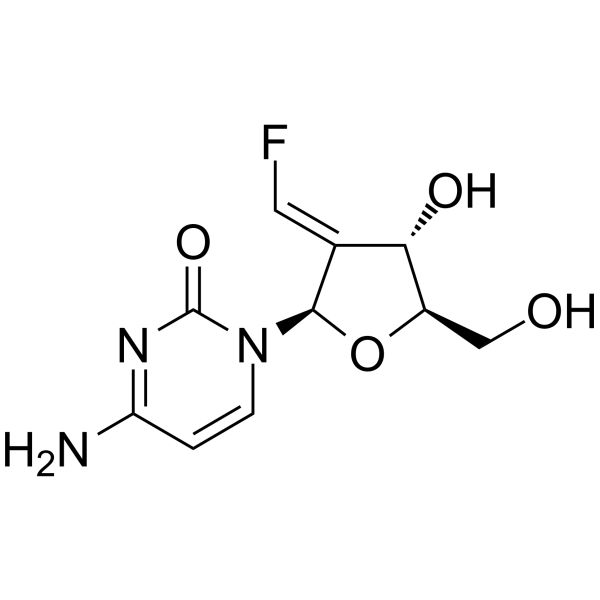
-
GC70026
Thymidine 3',5'-diphosphate tetrasodium
Thymidin-3',5'-diphosphat (Deoxythymidin-3',5'-diphosphat) Tetranatrium ist ein selektiver Inhibitor der Staphylococcus-Nuklease und des Tudor-Domänen-haltigen Proteins SND1 (ein Untereinheit des MicroRNA-Regulationskomplexes RISC) sowie der [3,5-2H2]-Tyrosyl-Nuklease. Thymidin-3',5'-diphosphat Tetranatrium besitzt antitumorale Aktivität und kann auch als Katalysator in biochemischen Reaktionen eingesetzt werden.
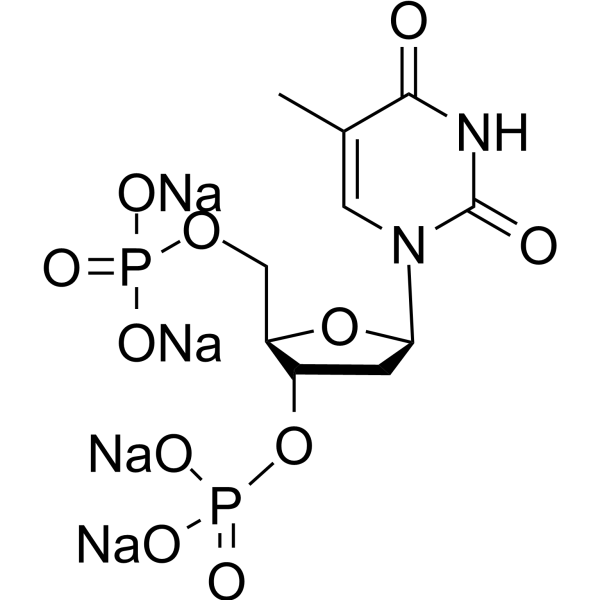
-
GC64862
Tricetin
Tricetin ist ein wirksamer kompetitiver Inhibitor der Keap1-Nrf2 Protein-Protein-Interaktion (PPI).
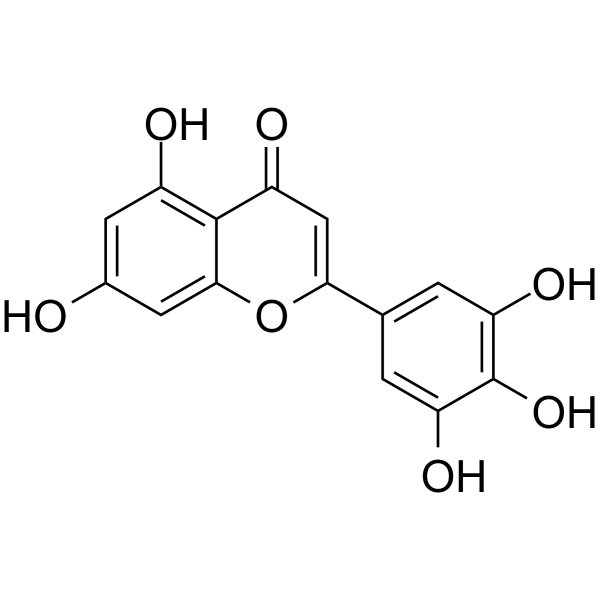
-
GC63986
VAS 3947
VAS 3947, ein spezifischer NADPH-Oxidase (NOX)-Hemmer, Übt eine starke gerinnungshemmende Wirkung aus.
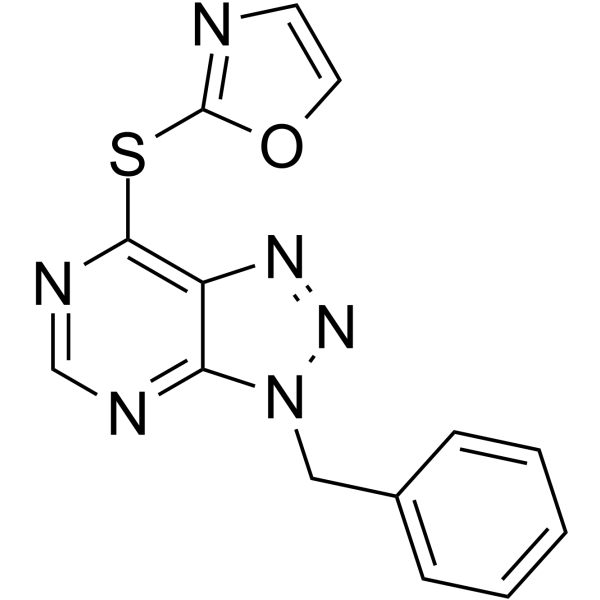
-
GC52364
Vimentin (139-159)-biotin Peptide
A biotinylated vimentin peptide

-
GC52371
Vimentin (G146R) (139-159)-biotin Peptide
A biotinylated mutant vimentin peptide

-
GC64040
VTP50469 fumarate
VTP50469-Fumarat ist ein potenter, hochselektiver und oral aktiver Inhibitor der Menin-MLL-Interaktion mit einem Ki von 104 pM. VTP50469-Fumarat hat eine starke Anti-LeukÄmie-AktivitÄt.
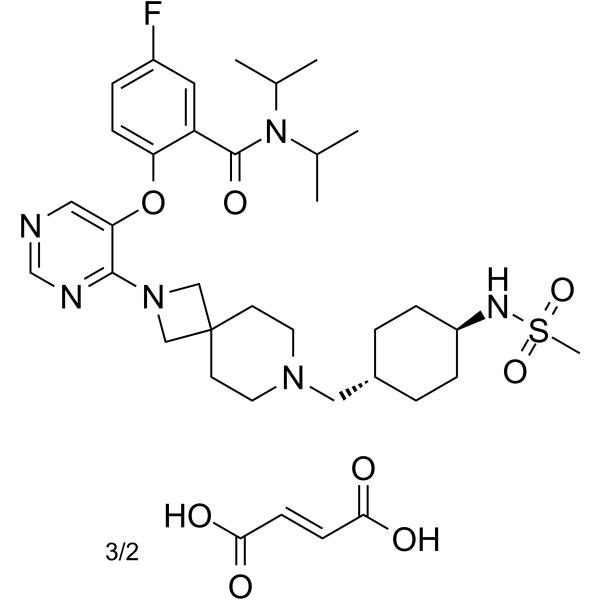
-
GC64127
Xylopine
Xylopin ist ein Aporphin-Alkaloid mit zytotoxischer Wirkung auf Krebszellen. Xylopin induziert oxidativen Stress, verursacht G2/M-Zellzyklusarrest und Apoptose in Krebszellen.
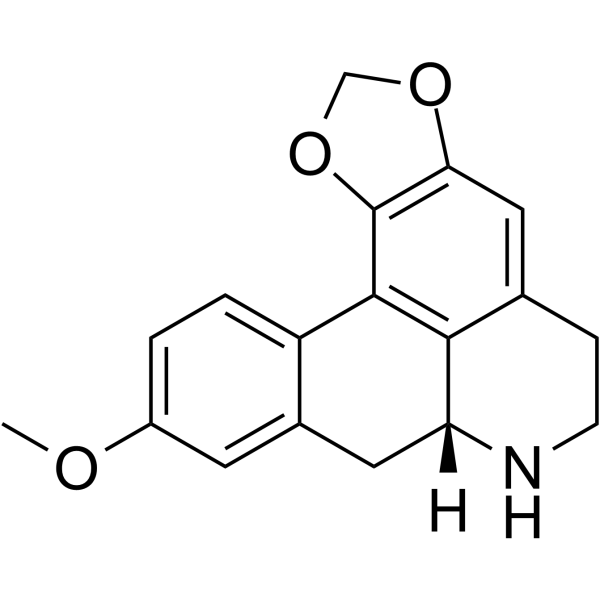
-
GC70154
Yakuchinone A
Yakuchinone A is a natural product that can be isolated from the fruit of Alpinia oxyphylla. It induces apoptosis in cells and has anti-cancer and anti-inflammatory activity.
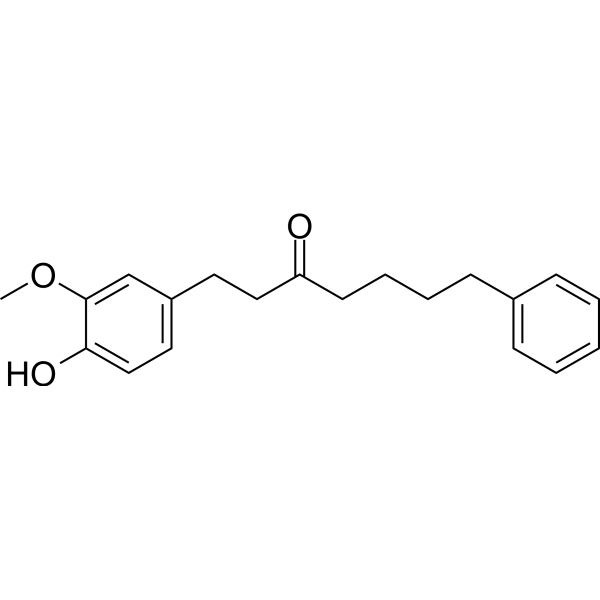
-
GC64992
YH-306
YH-306 ist ein Antitumormittel. YH-306 unterdrÜckt das Wachstum und die Metastasierung von kolorektalen Tumoren Über den FAK-Weg. YH-306 hemmt signifikant die Migration und Invasion von Darmkrebszellen. YH-306 unterdrÜckt wirksam die ungehemmte Proliferation und induziert Zellapoptose. YH-306 unterdrÜckt die Aktivierung von FAK, c-Src, Paxillin und PI3K, Rac1 sowie die Expression von MMP2 und MMP9. YH-306 hemmt auch die Actin-Related-Protein (Arp2/3)-Komplex-vermittelte Aktin-Polymerisation.
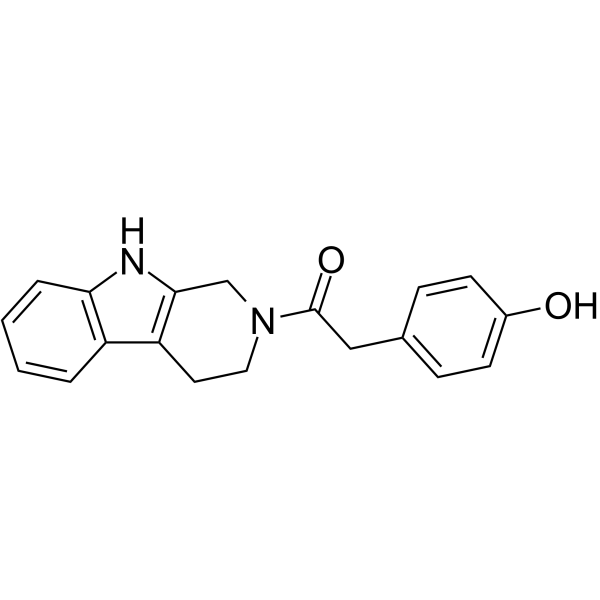
-
GC64013
ZX-29
ZX-29 ist ein potenter und selektiver ALK-Inhibitor mit einem IC50-Wert von 2,1 nM, 1,3 nM und 3,9 nM fÜr ALK-, ALK-L1196M- bzw. ALK-G1202R-Mutationen. ZX-29 ist gegen EGFR inaktiv. ZX-29 induziert Apoptose, indem es Stress im endoplasmatischen Retikulum (ER) induziert und den durch eine ALK-Mutation verursachten Zellwiderstand Überwindet. ZX-29 induziert auch eine schÜtzende Autophagie und hat eine Antitumorwirkung.
